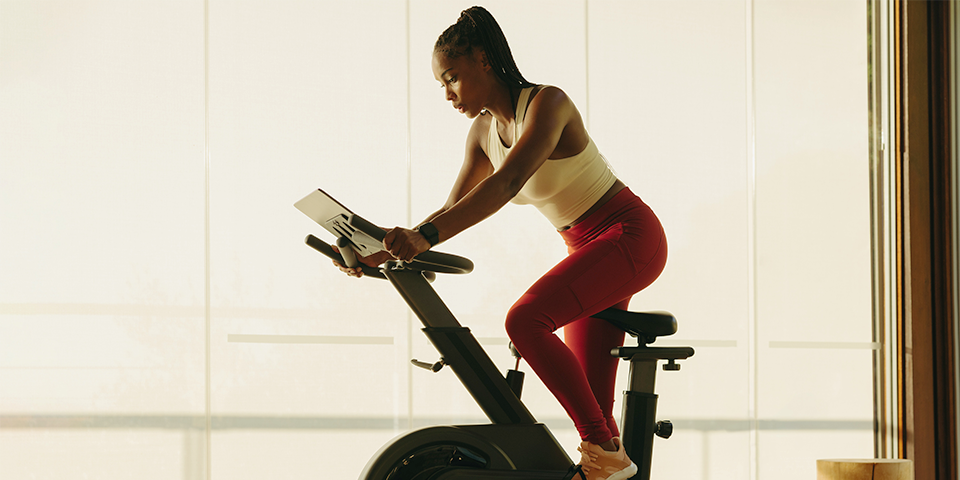Zone 2 cardio puts “steady” in “steady-state cardio.” It’s not as flashy as high-intensity interval training (HIIT) or dramatic like bonkingYet it deserves just as much attention.
Zone 2 cardio is the foundation of any fitness routine, whether you’re an endurance athlete looking to improve their performance or someone who just wants to get healthy. Functional people.
So, if you notice a “trend” around this type of exercise, know this: low-intensity, steady-state cardio (LISS Cardio) was always around. And if, until now, it hasn’t been part of your exercise routine, it’s time to change.
What is Zone 2 Cardio?

Zone 2 cardio refers to a certain exercise intensity that you can sustain for an extended period of time, during which your heart rate is 60 to 70 percent of your normal heart rate. Maximum heart rate. (Your maximum heart rate is the number of times your heart beats per minute during an all-out effort, such as sprinting the final stretch of a 5K. More on how to determine your maximum heart rate later.) In this zone, you may be short of breath, but You are not gasping for air.
There are five Heart rate zoneEach of which has a target range based on a percentage of your maximum heart rate (MHR). Below is a general breakdown Heart rate zoneBut keep in mind that these numbers are approximate and may vary from person to person depending on your source
| the zone | intensity | % of MHR |
|---|---|---|
| Zone 1 | Low-medium | 50% – 60% |
| Zone 2 | moderate | 60%–70% |
| Zone 3 | medium-high | 70% – 80% |
| Zone 4 | high | 80% – 90% |
| Zone 5 | very high | 90% – 100% |
ZOne 2 cardio benefits
As with any form of cardio exercise, Zone 2 cardio can Strengthens heart health and reduces the risk of cardiovascular disease. And because it burns calories, steady-state cardio is an effective tool for weight loss and healthy weight management. Zone 2 can also positively impact cardio (and movement, in general). Affects your mood and mental health And Improve your sleep quality.
But cardio in particular Keeping your heart in the zone 2 range also offers some unique benefits, especially for endurance athletes looking to improve their performance. Here are a few:
1. More mitochondria
If it’s been a while since you took biology class, here’s a quick refresher on what mitochondria are and why they’re important to athletic performance:
Mitochondria A type of organelle found in body cells that uses oxygen to produce adenosine triphosphate (ATP), the primary source of energy that fuels physical activity as well as basic biological functions. More mitochondria means more ATP and, therefore, more energy for physical activity.
Todd Buckingham, PhD is an exercise physiologist PTSportsPRO in Grand Rapids, Michigan, explains that Zone 2 cardio is “ideal for developing mitochondria.” Working out at a sustained intensity for long periods of time increases the energy demands of your cells, and the body adapts to these demands by producing more mitochondria.
So, for athletes looking to increase their endurance (or just feel better during and after a workout), Zone 2 cardio is essential.
2. Capillary development
Capillaries are small blood vessels that supply oxygen-rich blood to muscle cells, where the oxygen is used by the mitochondria to produce energy. According to Buckingham, optimal capillary development occurs squarely in zone 2, between 60 and 70 percent of your maximum heart rate.
A stronger network of capillaries allows your body to have more available oxygen for better use during exercise.
3. Longevity
Even if you’re not looking to set a new PR, Zone 2 cardio can stretch it and improve your daily life. “Zone 1 and Zone 2 exercise have been shown to increase life expectancy” says Buckingham. “It helps you grow VO2 maxAnd there is a direct The relationship between your VO2 max and your longevity“
A VO2 max Cardiorespiratory fitness metric that scores how efficiently your body uses oxygen. (The link between VO2 max and zone 2 cardio makes sense given what we know about capillaries and mitochondria.) The number measures milliliters of oxygen per kilogram of body weight per minute (ml/kg/min).
4. Less recovery required
HIIT It’s popular for a number of reasons: it’s fast, efficient, fun (depending on who you talk to), and offers plenty of its own unique benefits. That said, high-intensity exercise is necessary More recovery Doing low or moderate intensity exercise, and too much It can even negatively affect your health.
Because it’s less intense, Zone 2 cardio requires less recovery time, making it easier to stay consistent with your fitness routine and Stay active in between workouts. (You’ll get this if you’re too sore to work out after a HIIT session.)
Additionally, steady-state cardio is generally accessible to more people, including those new to fitness, people with injuries or mobility issues, and older adults.
When not using Zone 2 cardio

While almost anyone, health-wise, will benefit from incorporating LISS into their workout routine, focusing on Zone 2 cardio won’t help you achieve specific performance goals.
If you are concerned Explosiveness and power development – Maybe you’re a sprinter, a high jumper, or a baseball player – zone 2 cardio shouldn’t be your primary focus. Instead, you should prioritize Short bouts of intense movement.
How often and how long do you need to train in Zone 2?
In addition to two days of muscle-strengthening exercises, Centers for Disease Control The following weekly guidelines for aerobic activity are recommended:
- 150 minutes of moderate-intensity activity (aka Zone 2 cardio)
- 75 minutes of vigorous-intensity activity
- An equivalent combination of moderate- and vigorous-intensity activity
However, your training should align with your goals, fitness leveland lifestyle. For example, an avid runner training for a marathon will need to log more Zone 2 cardio per week than a time-pressed parent who has just started exercising.
That time can be distributed throughout the week (eg, five 30-minute workouts) or even with exercise “snacks” throughout the day. For example, you can jog for 15 minutes in the morning and cycle for 15 minutes after dinner for a total of 30 minutes.
If 150 minutes of steady-state cardio a week seems like an overwhelming amount, do what you can, says Buckingham.
“If you only have time for 10 or 15 minutes, it’s still going to be better than nothing. People make the mistake of going, ‘I only have time for 10 minutes of exercise, so it’s not worth it,'” he says. “Even 10 minutes five days a week is going to be better than zero minutes five days a week.”
How to Know When You’re in Zone 2

You can use a wearable Heart rate monitor To track your heart rate. But to know when you’re in zone 2, you first need to determine your maximum heart rate. If you don’t have lab or testing facilities (and most of us don’t), you can use this formula to make a rough estimate:
220 – (current age) = maximum heart rate
So, the average 30-year-old should have a maximum heart rate of 190 and their zone 2 heart rate should be between 114 and 133 bpm.
However, this equation has been reported to misjudge maximum heart rate by 10 to 12 bpm. It was also found to overestimate and underestimate maximum heart rate in young and older adults, respectively.
So, Buckingham recommends conducting your own test on or off a treadmill. “You run as hard as you can for 10 to 15 minutes, maxing out at the end,” he says. When you are at your peak Level of exertionNote your heart rate and use that number to calculate your zone 2 heart rate.
Alternatively, you can use the “Talk Test” to put yourself in Zone 2 “When you’re exercising, you’ll be able to hold a full conversation, speaking in full sentences without choking up,” says Buckingham. “If you’re gasping for air, you need to slow down.” You should run at a pace and intensity that feels moderately challenging but sustainable.
Zone 2 cardio example
Almost any type of exercise can be considered zone 2 cardio as long as you keep your heart rate within the appropriate range for the duration of your workout. Here are some common examples:
- walk fast
- jogging
- in progress
- hiking
- swimming
- the dance
- Aerobics
- cycling
- Rowing
- Elliptical training





